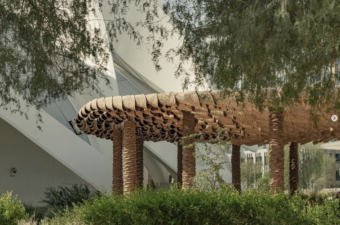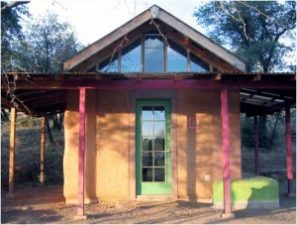 By choosing more quake-proof, sustainable, and cost-effective materials, developers could avoid future scenes like this one in Van, Turkey.
By choosing more quake-proof, sustainable, and cost-effective materials, developers could avoid future scenes like this one in Van, Turkey.
In the aftermath of a devastating earthquake that rocked its southeast region in October and rendered 14,000 buildings uninhabitable, Turkey is about to embark on its biggest ever urban renewal and construction campaign. Prime Minister Recep Tayyip Erdoğan has promised that the new buildings and property, which will require an estimated $255 billion in investment, will be “safe and sustainable” — unlike their predecessors.
If Erdoğan’s serious about those goals, we have one piece of advice for him: straw bale construction.
The advantages of a strawbale home
From environmental and cost-effective perspectives, straw bale outshines conventional building techniques in several ways.
The resulting buildings are up to twice as energy-efficient, because the thicker walls in a straw bale structure conserve heat during the winter and cool air during the summer, slashing utilities bills. In addition, the materials and labor cost required to construct a straw bale house are far cheaper than typical construction materials and the specialized builders who must be hired to work with them.
With the proper guidance, a family can build their own straw bale house, making it a logical building method for regions that require hasty, large-scale development.
Far more quake-resistant than conventional buildings
As far as Turkey’s concerned, however, the biggest advantage straw bale homes can offer might be their special ability to withstand tremors in the earth. Because of the flexibility of straw, bales of it can absorb shocks that would destabilize or snap harder building materials.
At the Network for Earthquake Engineering Simulation facility at the University of Nevada, Reno, straw bale homes were subjected to earthquake simulations in a study during March 2009. The houses survived accelerations greater than those experienced during the 7.6-magnitude 2005 earthquake in Kashmir.
Will Turkey choose the right development path this time?
In the aftermath of previous earthquakes in Turkey, the government has shown a disappointing tendency to replace collapsed buildings with just as shoddy ones.
After a 1983 earthquake, the Turkish government at first won praise for building 1,568 pre-fabricated homes in 54 days. Gradually, however, their inhabitants began to notice that the structures were not suited to the climate or local culture, were too small, and their construction had generated no local work.
It’s buildings like those, moreover, which are most hazardous to their residents when a quake strikes.
According to Earthquake Report’s analysis of Turkey, the main reasons for the collapse of buildings in the Van earthquake were: “inadequate materials, improper methods of construction, lack of repair of previous damage and inadequate foundations. Improvement in the local building materials and methods of construction both for repairs and for new buildings is more desirable than the relocation of the villages and towns.”
Studies have shown that half of Turkey’s 19 million houses are prone to earthquake damage. The upcoming urban renewal project that Erdoğan is touting will renovate or rebuild 8.5 million of them. Let’s hope the government decides to get the job done right this time.
Read more about disaster-proofing across the Middle East:
Micro-Financed Straw Houses For Pakistan Are Quake-Proof
Middle East Countries Prepare For Natural Disasters
Will Iran Be Ready For The Next Tsunami?
Image via IHH Humanitarian Relief Foundation/TURKEY




Thanks, I was just thinking it would be a shame if not because one story houses are bound to be only rural and farm houses.
Are there examples of multiple stories (three and up) straw-bale buildings?
There is a yoga center in Canada that looks like it is multiple floors. Worth asking Bill and Athena Stein for examples. They are a great resource for strawbale everything!
http://www.caneloproject.com/